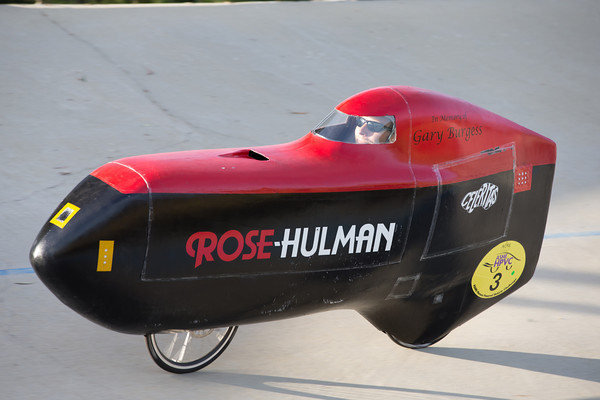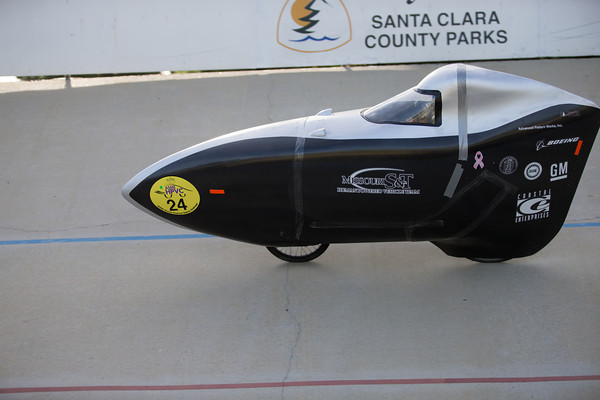Rose-Hulman Triumphs Again at ASME HPVC East and West Events
Rose-Hulman Triumphs Again at ASME HPVC East and West Events

For the fourth time in five years, a team of students from Rose-Hulman Institute of Technology sped to a first-place finish overall in ASME’s Human Powered Vehicle Challenge (HPVC) East and West competitions, which both took place last month. The team from Missouri University of Science and Technology was close behind, taking second place overall at HPVC East and third overall at HPVC West.
Students from nearly 60 universities — representing 27 states and Canada — competed during the two competitions. This year marks the 30th anniversary of the ASME HPVC program, which provides engineering students with the opportunity to demonstrate their skills at applying sound engineering design principles while developing sustainable and practical transportation alternatives. During the course of preparing for and competing in the Challenges, students work in teams to design and build efficient, highly engineered prototype vehicles for such everyday tasks as commuting to work or carrying goods to market.

The first of the two events, HPVC West, took place from April 12-14 at San Jose State University and the nearby Hellyer County Park Velodrome in San Jose, Calif. In addition to finishing first overall, the team from Indiana’s Rose-Hulman Institute of Technology and its entry “Celeritas” placed first in the women’s speed event, men’s speed event, and the innovation category. The team also placed second in the design category and twelfth in the endurance event.
Michael Moorhead, the team’s advisor, isn’t surprised at the continued success of the university’s team, given the enthusiasm that students and school faculty have for the program. “Rose-Hulman has found tremendous success at ASME’s HPVC over the past several years,” said Moorhead, assistant professor of mechanical engineering at the university. “I attribute this to several factors: innovative and intrinsically motivated team members, a history of success to build upon, and the full support of the Institute’s faculty, staff, administration, and student body.”
Colorado State University, which finished second overall at HPVC West with its vehicle “Donsloski,” took home first prize at the competition’s design category, second prize in the innovation category, and third in the endurance event. Overall third-place finisher Missouri S&T took second place in the men’s and women’s speed events, as well as fourth place in the design and innovation categories, with its entry “Colossus.”

Rose-Hulman and Missouri S&T made the overall top three again two weeks later at the HPVC East event at Ferris State University in Big Rapids, Mich. While Rose-Hulman once again took the top spot, this time Missouri S&T climbed to second place overall, with the University of Toronto coming in third overall.
The Rose-Hulman team swept the men’s and women’s speed events and the design and innovation categories, while placing third in the endurance race. The winner of that category, the University of Toronto, placed third in the men’s and women’s speed events. Meanwhile, Missouri S&T took second place in the design category, the men’s speed event and the endurance event.
In addition to the East and West competitions, ASME held a Human Powered Vehicle Challenge in Latin America last February in Venezuela. The Society is also planning another HPVC to be held in India this December.
To find out how other teams fared at the Human Powered Vehicle Challenge East and West events, and to learn more about the Human Powered Vehicle Challenge program, visit the Human Powered Vehicle Challenge page. To view the results of the HPVC East, West and Latin America competitions, visit Human Powered Vehicle Challenge results page.



